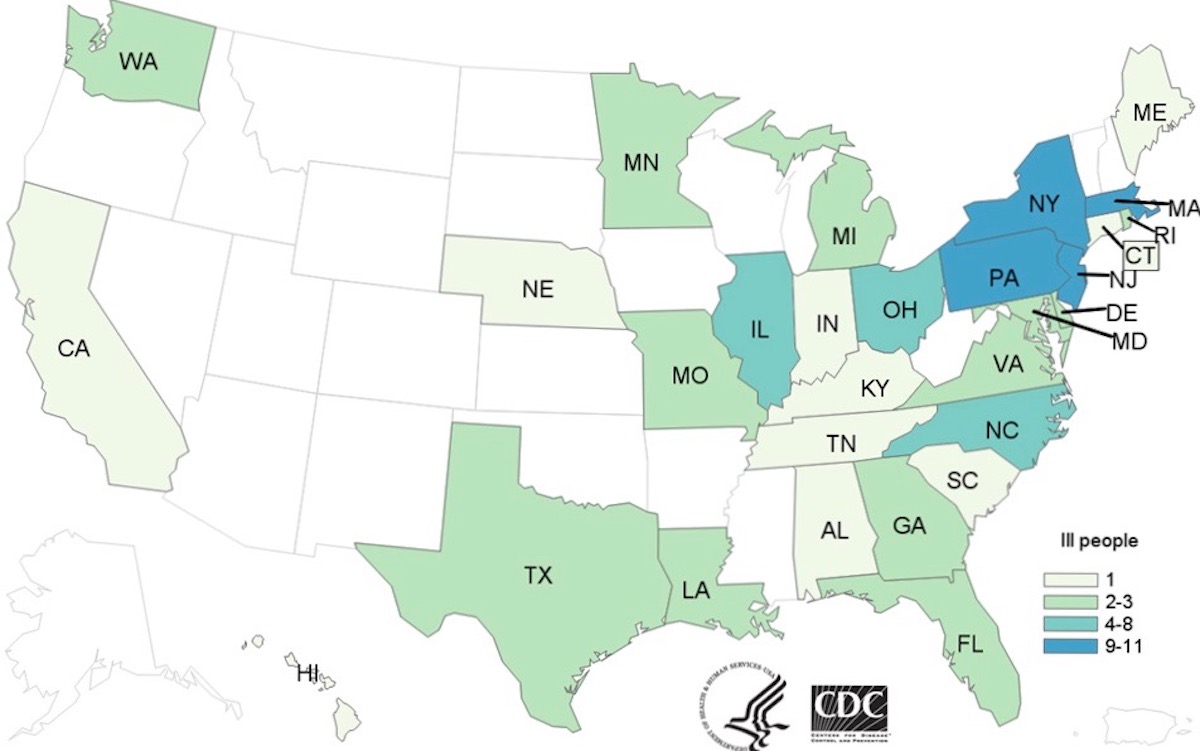The multidrug resistant Salmonella Infantis outbreak linked to raw chicken has hit consumers in Massachusetts, New York, Ohio, New Jersey, and Pennsylvania hard. Those states have 46 of the 92 patients who have been sickened in this multidrug-resistant Salmonella outbreak.

We don’t know why the outbreak has been concentrated in the northeast United States. While outbreaks are often limited to a certain geographical area, officials do not have a specific company or product that is linked to this outbreak. And there are illnesses in the southern U.S., the midwest, and the west coast as well.
There are two big concerns about this Salmonella Infantis outbreak. The first is that the bacteria is resistant to so many antibiotics. That means that people may be sicker, and that their infections may be much more difficult to treat. And, in fact, the hospitalization rate in this outbreak is higher than normal. Most Salmonella outbreaks have a hospitalization rate of about 20%. In this outbreak, 34% of patients are in the hospital.

Attorney Fred Pritzker, who has represented clients sickened with Salmonella infections, said, “Even when you recover from this type of infection, there is still a risk you will develop a serious health complication in the future.” Call 1-888-377-8900.
Food safety attorney Fred Pritzker, who has represented many clients in Salmonella lawsuits against restaurants, grocery stores, and processors, said, “Drug resistance is a real problem in food poisoning outbreaks. Processors are going to have to work harder to make sure the food they make is safe for people to eat.”
In interviews, ill persons said they prepared or ate chicken products that were purchased raw, including ground chicken, chicken pieces, and whole chicken. They also purchased many brands of raw chicken products from multiple stores. One person got sick after pets in their home were fed raw ground chicken pet food. And another person lived with someone who works in a facility that raises or processes chickens.
Public health officials have found the outbreak strain of Salmonella Infantis in raw chicken pet food, in raw chicken from 58 slaughter and processing facilities, and in live chickens. Whole genome sequencing showed that the Salmonella in these samples is closely related genetically to samples taken from patients. That means that the people in this outbreak got sick from handling or eating raw or undercooked chicken.
When you purchase chicken, be sure you know how to handle it. Wash your hands well after you touch any raw chicken or any raw meat. Make sure to avoid cross-contamination, such as chicken juices dripping on other foods or surfaces. Clean countertops, cutting boards, plates, and utensils with soap and water after the chicken is in the oven. And always, always cook chicken to 165°F and test it every time using a reliable meat thermometer.
And if you do develop the symptoms of Salmonella food poisoning, which include fever, abdominal cramps, nausea, vomiting, and diarrhea, see your doctor. You may be part of this Salmonella Infantis outbreak.




